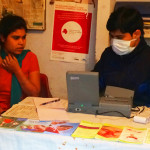Unit 4: Resolution and Prevention


This fourth unit deals with the resolution and prevention of sexual harassment at the workplace. It begins with the notion that for any action to be taken by an employer and the management, an aggrieved woman must file a complaint of any sexual harassment faced by her. Once such a complaint is filed before the ICC (Internal Complaints Committee), the problem can be revolved either by an inquiry, or by conciliation between the aggrieved woman and the respondent.
- Conciliation: This can only occur at the request of the aggrieved woman, and there can be no monetary basis for it. Once the problem has been settled by conciliation, the ICC must record it, and send a copy of it to the employer so that necessary action can be taken. Consequently, a copy of the settlement must be given to the aggrieved woman and the respondent. It must be noted that once settlement has been reached by way of conciliation, the ICC cannot conduct any further inquiry on the basis of the same complaint. Therefore, such a measure needs to be taken only with the help of sound legal advice.
- Inquiry into complaint: The following steps are to be followed in case there is inquiry into complaint-
- Inquiry must be made keeping in mind the service rules, or whichever employment rules apply to the respondent.
- In case settlement by way of conciliation was reached, but the respondent failed to comply with the terms of the settlement, then the ICC has the authority to inquire into the matter.
- When parties to the inquiry belong to the same workplace, both will be given an opportunity to be heard, as well as the opportunity to represent against the findings of the ICC, should they disagree with it.
- While the ICC is inquiring into the complaint, the aggrieved woman is entitled to three months of leave, in addition to the leave she is already eligible for.
- The aggrieved woman and the respondent can be transferred to another workplace during the course of the inquiry.
- The aggrieved woman is entitled to any relief, as prescribed by the ICC, during the course of the inquiry.
- In case such a relief is provided, employer must send a report to the ICC about the same.
- Once ICC completes its inquiry, it is required to send a copy of the same (within 15 days of completion of inquiry) to the employer as well as the involved parties.
- If ICC finds that the allegations against the respondent are not proven, then it will recommend no action to be taken
- If ICC finds that allegations are proven, then it will provide a series of recommendations for the employer to follow.
An important point which is stated here is that false and malicious complaints are dealt with in a severe manner. Another critical point is that the identities of the aggrieved woman and the respondent cannot be made public knowledge.
This unit also discusses certain preventive measures which employers should take. These are:
- Providing a safe working environment
- Display (at a conspicuous place) the penal consequences of sexual harassment
- Organize workshops and training sessions to sensitize employees about the Sexual Harassment Act.
Further, it is stated that in the event that the employer fails to constitute an ICC, doesn’t comply with ICC’s recommendations, or contradicts the Sexual Harassment Act in any way, the employer can be fined up to Rs Fifty Thousand in the first instance. If such an offence recurs, then the employer’s license to carry out business can be suspended.
The supplementary material included in this module include a document on the penal provisions pertaining to the Sexual Harassment Act, and a document on the constitution, functions, powers and duties of the ICC and the LCC.
There are also two videos included in the module, which effectively summarize the entire module.
I found this last module quite informative, as it not only provided the complaint process in detail, but also enumerated the preventive measures which employers need to take, to curb the cases of sexual harassment at the workplace.
Looking forward to reading your blogs, you can mail us your entries at WriteWithUs@csrindia.org, or upload them at Write With Us.
Donation for Centre for Social Research to Join our effort in rehabilitating Domestic Violence
Discuss this article on Facebook




